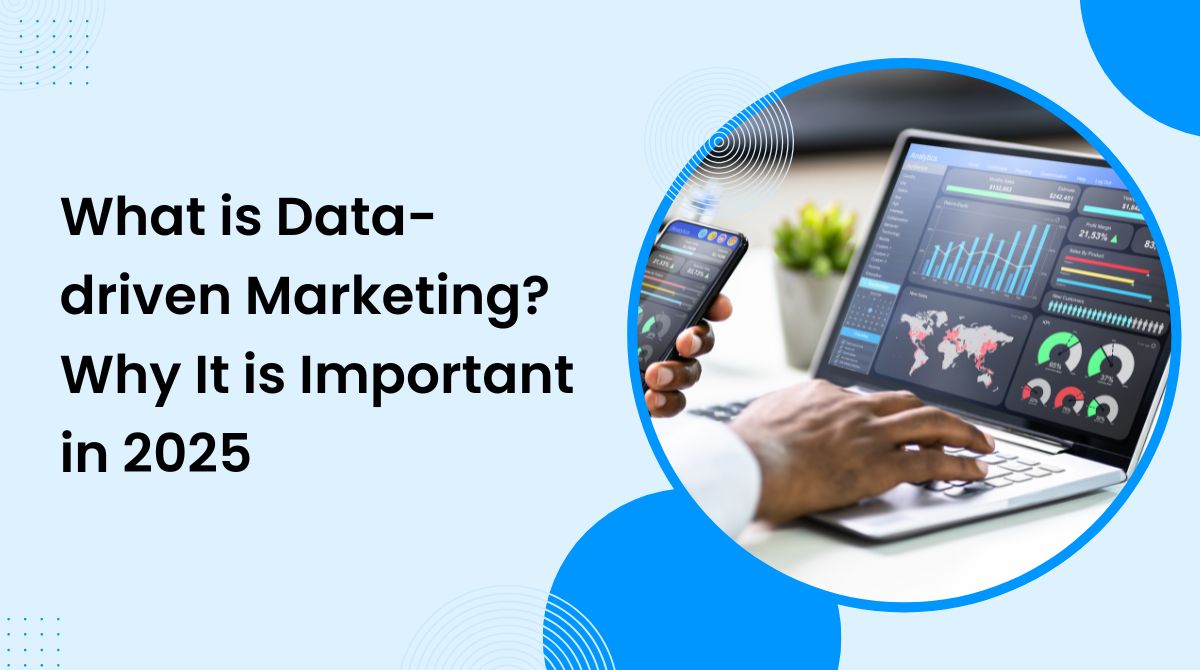In 2025, guessing your way through marketing is like driving blindfolded — dangerous, unpredictable, and almost certain to fail. Data-driven marketing replaces guesswork with informed decisions based on real numbers, patterns, and customer behavior.
With advanced analytics tools, AI-powered insights, and more tracking capabilities than ever, businesses can understand their audience, optimize campaigns, and maximize ROI. This guide will show you how to use data effectively to boost your marketing results.
What Is Data-Driven Marketing?
Data-driven marketing is the process of collecting, analyzing, and using customer and market data to create targeted campaigns that deliver better results.
Instead of making decisions based on assumptions, you use analytics to determine:
- Who your customers are
- What they want
- When and where to reach them
- Which messages make them take action
Why Data-Driven Marketing Matters in 2025
- Better Targeting – Reach the right people with the right message.
- Higher ROI – Spend budget only where it’s most effective.
- Faster Decision-Making – Make adjustments in real time.
- Personalization – Create experiences tailored to each customer.
- Competitive Advantage – Use insights your competitors may overlook.
Step 1 – Define Your Goals and KPIs
Before diving into analytics, know what you want to measure.
Common Marketing Goals:
- Increase website traffic
- Improve conversion rates
- Grow email subscribers
- Boost customer lifetime value (CLV)
Key Performance Indicators (KPIs):
- Click-through rate (CTR)
- Cost per acquisition (CPA)
- Return on ad spend (ROAS)
- Engagement rate
Step 2 – Collect Quality Data
Bad data leads to bad decisions, so ensure accuracy from the start.
Data Sources in 2025:
- Website analytics (Google Analytics 4, Matomo)
- Social media insights (Facebook, Instagram, LinkedIn analytics)
- Email marketing stats (open rate, CTR, conversions)
- CRM data (HubSpot, Salesforce)
- Ad platform data (Google Ads, Facebook Ads Manager)
Pro Tip: Combine first-party data (collected directly from customers) with third-party data for deeper insights.
Step 3 – Segment Your Audience
Data becomes powerful when you group customers by behavior, location, or preferences.
Segmentation Examples:
- New vs. returning customers
- High spenders vs. budget buyers
- Specific interests or purchase categories
- Geographical location
Step 4 – Analyze Customer Journeys
Map out how customers move from discovering your brand to making a purchase.
- Which channels bring them in?
- Where do they drop off?
- What content converts them?
Tools like Hotjar or Crazy Egg can show heatmaps and user behavior.
Step 5 – Use Predictive Analytics
In 2025, AI-driven predictive analytics can forecast future behavior based on past trends.
- Predict which customers are most likely to buy.
- Identify churn risks before they leave.
- Suggest the best upsell or cross-sell opportunities.
Step 6 – Test and Optimize Campaigns
A/B Testing:
- Try two different headlines, CTAs, or ad images.
- Use data to choose the winner.
Multivariate Testing:
- Test multiple elements at once for deeper insights.
Step 7 – Personalize Marketing Efforts
Data lets you create highly personalized campaigns.
- Show different website banners based on location.
- Send targeted email offers based on past purchases.
- Adjust ad creatives for different audience segments.
Step 8 – Monitor Real-Time Performance
In 2025, you don’t need to wait for monthly reports — real-time dashboards let you react instantly.
- Pause underperforming ads.
- Boost high-converting campaigns.
- Respond to trending topics on social media.
Step 9 – Ensure Data Privacy and Compliance
With stricter data laws (GDPR, CCPA, and new 2025 regulations), businesses must:
- Get user consent for tracking.
- Offer easy opt-outs.
- Be transparent about data usage.
Step 10 – Continuously Improve
Data-driven marketing isn’t a one-time thing. Keep testing, measuring, and refining your approach to stay ahead.
Trends in Data-Driven Marketing for 2025
- AI-Enhanced Dashboards – Automatic insights without manual analysis.
- Cookieless Tracking – Privacy-focused solutions for measuring behavior.
- Unified Customer Data Platforms (CDPs) – Centralizing data from all channels.
- Voice Search Analytics – Tracking spoken queries for better optimization.
- Emotion Recognition – AI detecting emotional reactions to ads.
Common Mistakes to Avoid
- Collecting too much irrelevant data.
- Focusing on vanity metrics instead of real business outcomes.
- Ignoring privacy regulations.
- Not acting on the insights collected.
Conclusion
In 2025, data is your most valuable marketing asset — but only if you know how to use it. By setting clear goals, collecting accurate data, analyzing customer behavior, and continuously optimizing, you can create highly targeted, cost-effective campaigns that drive real results.
Data-driven marketing turns your decisions from “educated guesses” into strategic moves backed by proof, giving you the confidence to scale your business effectively.

